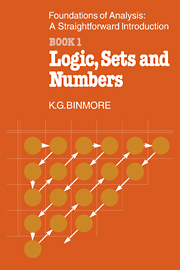Summary
Introduction
We began listing the axioms for the real number system in chapter 7. The axioms given were those of arithmetic and order. A system satisfying these axioms is called an ordered field. Thus the real number system is an ordered field. But this is not a full description of the real numbers. As we saw at the end of the last chapter, the system of rational numbers is another example of an ordered field.
To complete the description of the real number system, another axiom is required. We call this axiom the continuum axiom. Its purpose is to ensure that sufficient real numbers exist to fill up the ‘holes’ in the system of rational numbers (§8.14).
The method of exhaustion
This has nothing to do with getting your way at committee meetings. It is a method invented by Archimedes for finding the areas of regions with curved boundaries. We shall use the method to motivate the continuum axiom.
Briefly, the method involves packing polygons inside the region until its area is exhausted. In principle, one can calculate the area of any union of a finite number of the polygons. The area of the region in question is then identified with the smallest real number which is larger than each such polygonal area.
One of the shapes considered by Archimedes was the region trapped between a parabola and one of its chords. This example will be used to illustrate the idea. It is important to bear in mind that the argument to be used does not have the same status as those which we use when we prove theorems.
- Type
- Chapter
- Information
- The Foundations of Analysis: A Straightforward IntroductionBook 1 Logic, Sets and Numbers, pp. 63 - 77Publisher: Cambridge University PressPrint publication year: 1981

